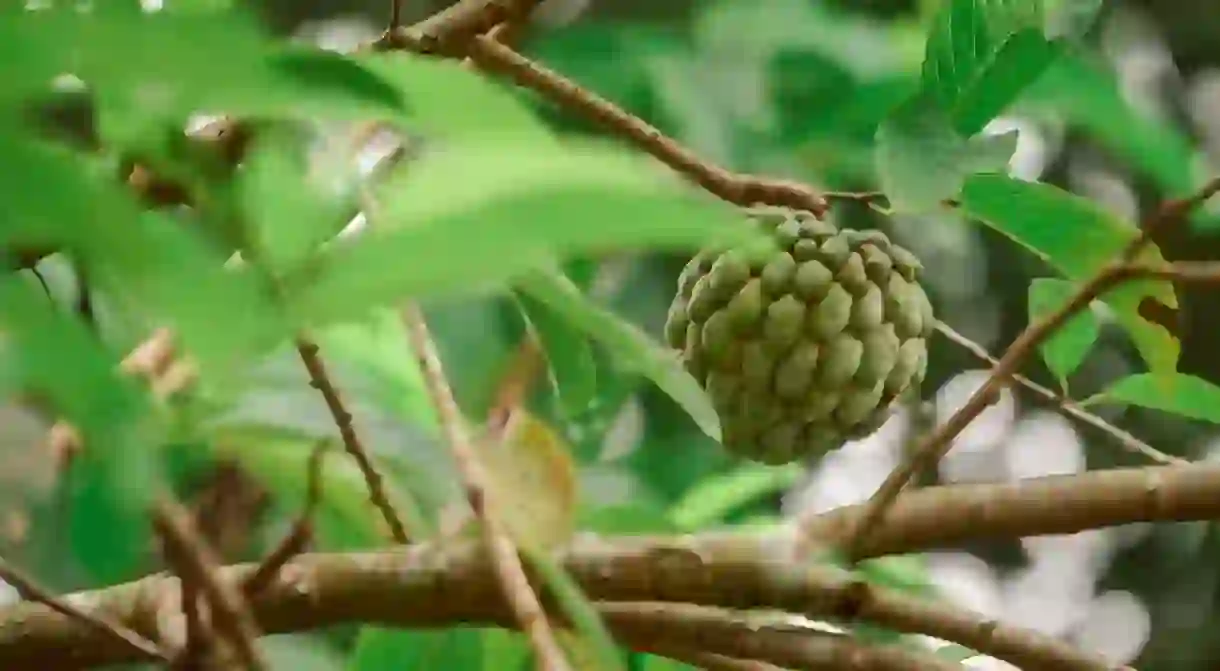Costa Rica's Exotic Fruit and Where to Find Them

Costa Rica is a country where nature abounds – especially when it comes to the wide variety of exotic fruit on offer. Amid the familiar mangoes, papaya, bananas, starfruit, and coconuts, sold by vendors and local farmer’s markets, you’ll also find lesser-known tamarindo, pejibaye, guanábana, momon chinos, and manzanas de aqua. Here are the must-try fruits when in Costa Rica.
Did you know – Culture Trip now does bookable, small-group trips? Pick from authentic, immersive Epic Trips, compact and action-packed Mini Trips and sparkling, expansive Sailing Trips.
Annona
Annona is a delightful treat, and is related to the custard apple (anona chirimoya) which is found in the northern part of the country. It is a heart-shaped fruit that turns reddish-brown when ripe. To eat the fruit, cut it in half and use a spoon to scoop out the milk-white flesh and large black seeds. The taste is delicate, sweet, with hints of rose water.
Breadfruit

Breadfruit grows mainly on the Caribbean side of Costa Rica. It can weigh up to 3 kg (7 lbs), and is rich in iron, magnesium, calcium, vitamins A, B, and C, fiber, protein, and amino acids. It is also a good source of carbohydrates. It can be ground into flour and used in a number of different dishes, both sweet and savory. Breadfruit is known as a fruit of interest to scientists around the world who are studying ways reduce and solve the worldwide hunger crisis that is affecting over 1 billion people. Aside from its nutrition benefits, it is easy to grow, take care of, and harvest.
Marañón
Marañón, also called cashew fruit, is a delicious, juicy, and slightly zesty flame-colored fruit that is a must-try when in Costa Rica. And yes, that is a cashew nut attached to its extremity! The fruit’s kidney-shaped nut must be roasted first before eating, otherwise it is poisonous. The fruit, however, is eaten fresh, and can be used to make jam, wine, and a lemonade-like drink. Parrots also love this fruit, and you’ll see many enjoying it on the branch.
Maracuyá

Maracuyá, also known as passionfruit, is a delectable fruit to make juice with or to be eaten raw with a sprinkle of sugar on top. The inside of the fruit is slightly gelatinous and dotted with edible seeds. Passionfruit is a great source of vitamin A and C and fiber. The fruit also contain a lot of antioxidants, which helps to support a healthy immune system.
Guanábana

Guanábana is a tasty fruit also known as soursop, and has powerful cancer and virus fighting abilities. For centuries, the bark, leaves, seeds, and fruit have been used medicinally to treat cancer, sleep disorders, arthritis, heart disease, liver problems, and fever, among other ailments in Central and South America and Asia. Studies have proven that this amazing fruit has antiviral and antimicrobial properties. While the fleshy inside might look unappealing, the taste will change your mind, having been described as a combination of kiwi and pineapple flavors.
Pejibaye
Pejibaye comes from the peach palm tree and is grown all over the country. Its shape is similar to that of an acorn, and its flesh is flame-colored. It cannot be eaten raw, but after being boiled and peeled, the inside is very tasty and is typically eaten with a smear of mayonnaise – cream of pejibaye soup is one of the most delicious traditional Costa Rican dishes. Pejibayes are also very nutrient-rich and contain high levels of vitamins A, B, C, E, and K, as well as iron, potassium, zinc, and magnesium.
Momon chinos
Between July and October, momon chino stands can be found everywhere. Momon chinos are a type of lychee, and an incredibly divine and juicy fruit that look like something out of a Dr. Seuss story – peel back the hairy skin, and a white grape-like fruit appears, ready to be consumed until the large pit in the center appears. Incredibly moreish, momon chinos are very high in vitamin C and also contain copper, which support brain function.
Manzana de aqua
Manzana de aqua is a crisp apple-like fruit that has a light rose scent. They grow at higher altitudes and produce a spectacular red flower. This refreshingly subtle fruit is often made into jams or crystalized candies, which are also very good. It is advised that you don’t eat too many though, since the seeds are poisonous if eaten in large quantities.
Pitaya

Pitaya, also known as dragonfruit, is as exotic looking as it is tasting. Named after its exterior dragon-like scales, the fruit has a white and creamy interior flesh dotted with black seeds. Packed with powerful nutrients including vitamins B1, B2, B3, and C, as well as iron, calcium, and phosphorous, it’s a delicious superfruit to try when in Costa Rica.
Tamarindo
Tamarindo comes in a long brown shell similar to that of pea pods. The insides are mainly used to make a sweet juice, though tamarindo is also used to make jams, syrups, and candies. The fruit is said to support liver health, so if you spend too many nights on the town, try some tamarindo juice to ease the morning after.













